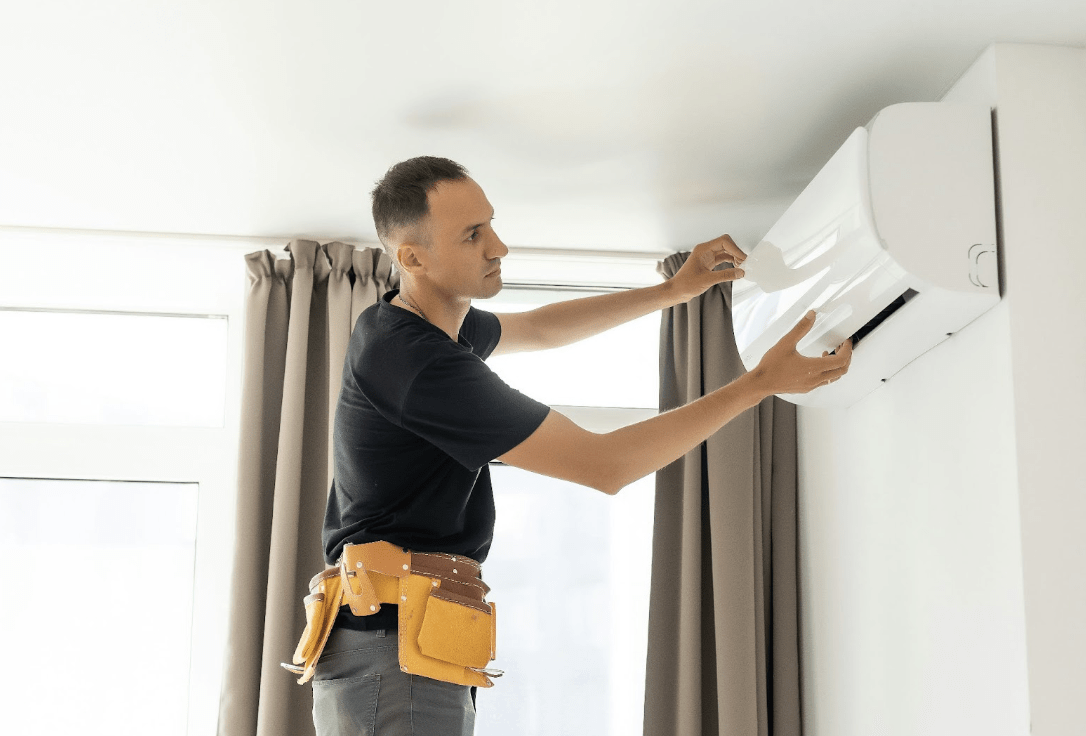
How to Improve the Air Quality of Your Home
Chris & Kristi Mitchell April 17, 2024

Chris & Kristi Mitchell April 17, 2024
Improving the air quality inside your home is not just about enhancing comfort—it's about safeguarding your health and well-being. With most individuals spending a significant amount of time indoors, the presence of pollutants like dust, mold, pet dander, and volatile organic compounds (VOCs) can lead to health issues ranging from allergies and asthma to more serious respiratory conditions.
If you’re the proud owner of a Georgetown, TX, home and wondering how to tackle this issue proactively, you’ve come to the right place. This comprehensive guide explores a number of effective strategies to enhance your home's air quality, ensuring a cleaner, safer, and more comfortable living space.
Indoor air quality refers to the air quality within and around buildings and structures, especially as it relates to the health and comfort of building occupants. Indoor air quality is especially important for those who have lung conditions and can be affected by microorganisms, gases, particulates, and other pollutants.
Of course, understanding the sources of indoor air pollution is the first step toward improving it. Common sources include cleaning agents, paint, building materials, dust mites, tobacco smoke, pet dander, pollen, and outdoor air pollution infiltrating the home. Mold and mildew, which thrive in damp environments, can also significantly compromise air quality. By recognizing these sources, you can take measures to reduce or eliminate their impact.
Increasing the flow of outdoor air into your home can significantly enhance indoor air quality. Regularly open the windows and doors (when weather permits) to allow fresh air to circulate and dilute indoor pollutants, and utilize fans for cross-ventilation. Consider installing trickle vents or using exhaust fans in high-moisture areas like kitchens and bathrooms to help remove contaminants and prevent mold growth.
Dust and allergens can accumulate on surfaces and in fabrics, contributing to poor air quality. Regular cleaning is essential to keep these pollutants at bay. Vacuum all carpets, rugs, and upholstered furniture regularly using a vacuum cleaner equipped with a HEPA filter to capture fine particles. Dust off surfaces with a damp cloth to avoid dispersing dust into the air.
Additionally, controlling clutter can minimize dust accumulation and reduce hiding spots for pests. Washing bedding, curtains, and other fabric items in hot water weekly can minimize the presence of dust mites and other allergens.
Moisture levels play a crucial role in indoor air quality. High humidity can foster the growth of mold and mildew, while low humidity can cause respiratory discomfort. Aim to keep indoor humidity levels between 30% and 50%. Use dehumidifiers in damp areas and humidifiers in dry environments to maintain optimal humidity levels. Regularly checking for water leaks and addressing any issues promptly can also help manage humidity levels.
Air purifiers can be an effective solution for removing pollutants from indoor air. Devices with HEPA filters are particularly effective at capturing particulate matter, including pollen, pet dander, and dust mites. For concerns about gases and odors, consider air purifiers with activated carbon filters. To maximize their effectiveness, place air purifiers in high-traffic areas or rooms where you spend the most time.
Many conventional cleaning products contain chemicals that can degrade indoor air quality. To reduce the emission of harmful VOCs, opt for natural, non-toxic cleaning solutions and personal care products. Baking soda, vinegar, and lemon juice are effective, eco-friendly alternatives for many household cleaning tasks.
Certain indoor plants can help purify the air. Plants like the spider plant, snake plant, and peace lily can absorb pollutants like ammonia, formaldehyde, and benzene. While plants alone cannot drastically improve the air quality, they can be part of a broader strategy for creating a healthier indoor environment.
Regular maintenance of your HVAC system is vital for maintaining excellent indoor air quality. Change the filters according to the manufacturer's recommendations, typically every three to six months, to ensure that they effectively remove particles from the air. Consider having your air ducts inspected and cleaned if you notice significant dust buildup or if there are signs of mold growth.
Radon, a colorless, odorless gas that can cause lung cancer, is a risk in homes across the United States. Test your home for radon, especially if you live in an area known for high radon levels. Radon testing kits are affordable and easy to use, and if levels are high, radon mitigation systems can effectively reduce concentrations to safer levels.
Improving the air quality of your home requires a multifaceted, proactive approach. By implementing these top strategies, you can significantly reduce indoor pollutants, creating a healthier environment in your beloved home. If you’re ready to get started in Georgetown real estate, consult The Chris and Kristi Team at eXp Realty for expert guidance along the way.
Stay up to date on the latest real estate trends.

Exploring the top summertime lake experiences near Georgetown.

Discover a Thriving Arts Community in the Heart of Texas.

Luxury Retail and Local Charm in the Heart of Texas.

Find the best place to stay next time you visit Georgetown.

Treat yourself and your significant other to these romantic jaunts.

Take a vacation from winter weather at these local spots.

Make reservations for upscale dining at these local favorites.

Celebrate the season with lights, charm, and unforgettable moments in Georgetown.

Discover the joy of the holidays in Georgetown, where festive cheer meets small-town magic.